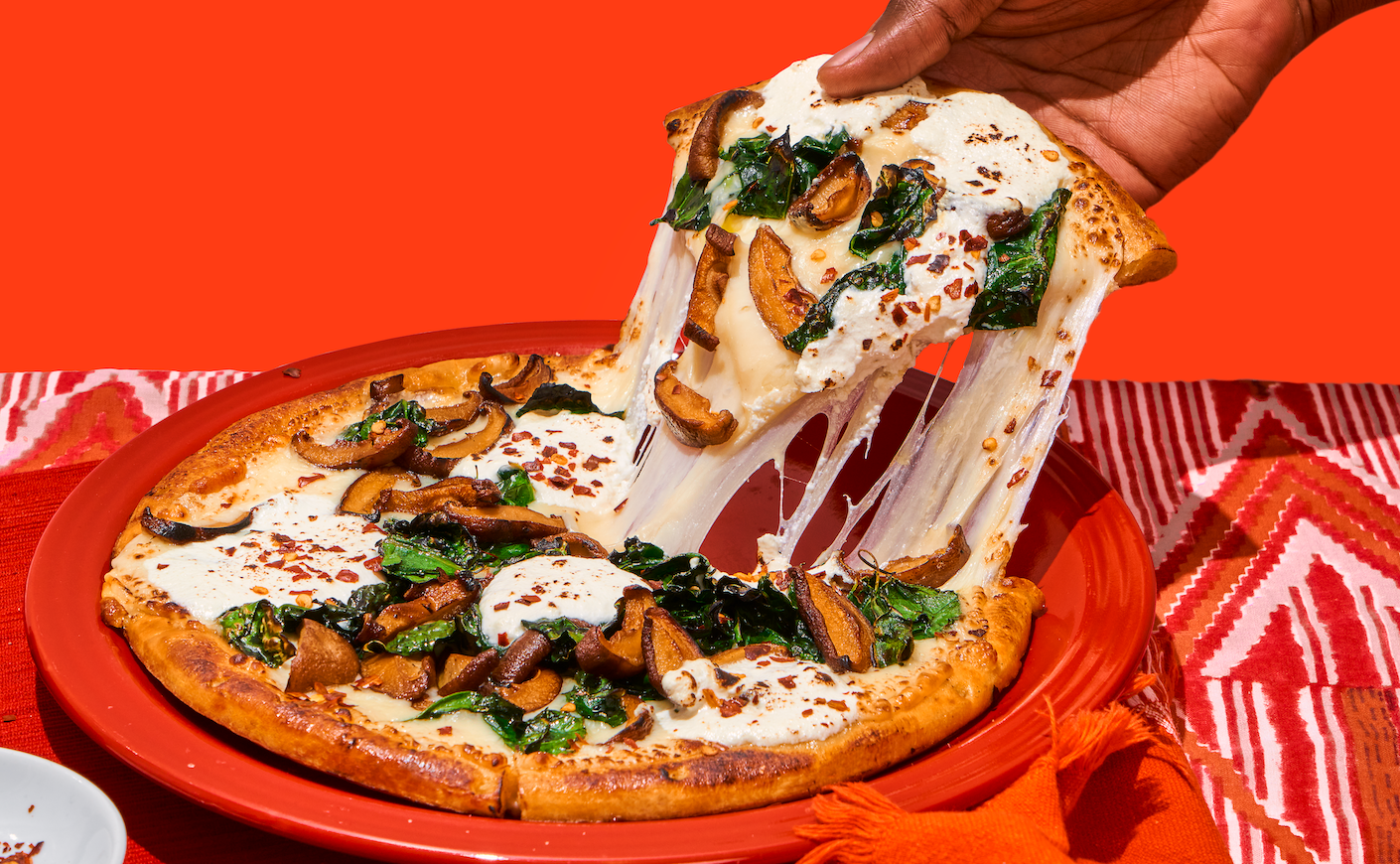If you can’t eat foods with gluten, or have tried to lower your carb intake, you might’ve found yourself munching on a veggie-filled pizza or pasta alternative. Cauliflower has become a trendy replacement in the past few years, along with a hearty staple of the mediterranean diet: the humble chickpea.
Banza, a food company that launched in 2014, is leading the exodus to the legume with its popular chickpea pasta and rice products. And this past October, it launched its first rendition of the holy grail of comfort foods: a chickpea-based frozen pizza.
We checked in with Maya Feller, a registered dietician, about the health benefits of packing more chickpeas into your diet — and asked her how the legume compares to cauliflower as a replacement.
Wake-Up Call: It seems that everyone is reaching for comfort food nowadays! Instead of reaching for carb-filled pizza or pasta, what nutritional benefits does one get from reaching for one made from chickpea-based products instead?
Maya Feller: Given that folks are spending more time at home and potentially looking for ways to self-soothe amidst the pandemic, it’s no surprise that the common go-to remedy is comfort foods. Most people would agree that when considering comfort food, their first choice is presumably a carbohydrate-rich dish, with some form of sentimental attachment or nostalgia. It’s like receiving a large familial hug followed by a sense of calm, something we all need.
Chickpeas are a nutrient-dense alternative to wheat-based carbs when you’re looking to increase plant-based protein, fiber and micronutrients. Chickpea-based pizza crusts and pasta, found in Banza products, are delicious and easy to incorporate into a nutrition routine. Although it’s unlikely to see a dramatic difference in total carb content, chickpea-based products are much higher in protein and fiber, which digest slowly and help you feel fuller longer. It’s also worth noting that carbohydrates are not the enemy, as they are the brain’s preferred source of energy. Rather we need to think about the proportion of carbohydrates as well as the type of carbohydrates that are on our plates. This is why chickpea-based products are an excellent addition.
And what effect can these nutritional benefits have on your overall health?
Protein is an essential macronutrient in the body. As the foundational building blocks of muscle, skin and organs, it is required for building and maintaining lean body mass as well as repairing tissues. In 100 grams of chickpeas, there are roughly 19 grams of plant-based protein making them an excellent source of protein.
Chickpeas are rich in fiber, specifically soluble fiber. Soluble fiber is a type of fiber that is absorbed and digested slowly in the body and provides nutrients to gut bacteria. Slower digestion supports steady glucose levels and helps you feel fuller longer. Also, soluble fiber has been shown to decrease total cholesterol levels and the risk of cardiovascular disease.
The micronutrient profile of chickpeas packs a powerful punch. They contain high levels of iron, potassium, calcium and magnesium, which support immune and brain function, bone and cardiovascular health, energy and metabolism, and GI function.
Speaking of carbs, cauliflower has become the most hyped-up carb alternative! What do chickpeas have that cauliflower doesn’t — and vice-versa?
Chickpeas and cauliflower can be used as an alternative to certain wheat-based products; however, their nutrition profiles differ drastically. They both contain plant-based protein, fiber and micronutrients, but the values found in cauliflower are different from those found in chickpeas.
For example, 100 grams of chickpeas contains 17 grams of fiber, 19 grams of protein, and micronutrient daily values of 25% potassium and B6, 28% magnesium, 34% iron, 10% calcium.
In comparison, 100 grams of cauliflower contains 2 grams of fiber, 2 grams of protein, but provides 80% of your daily value in vitamin C and 10% B6. If you’re looking for a nutrient-dense powerhouse, chickpeas fit the bill. As always it’s important to make nutrition choices that support your lifestyle and health-related goals.
I know a lot of people who are skeptical of these kinds of replacements. What do you say to someone who’s hesitant about trying out chickpea crust or pasta?
Just as you would advise a child to try a new food before passing judgement on it, the same still holds true for adults. There’s no harm in buying a box of Banza Pasta or Pizza to resolve your looming curiosity.
In addition, it’s important to remember that these alternates are substitutes for the original. Trying a new type of food can be fun, think of it as a food adventure. Who knows where it will lead, but it will certainly be delicious! The flavor profile and texture of Banza’s Pizza is in my opinion delicious and unmatched!
Maya Feller, MS, RD, CDN of Brooklyn-based Maya Feller Nutrition is a registered dietitian nutritionist who is a nationally recognized nutrition expertise. She is the author of The Southern Comfort Food Diabetes Cookbook: Over 100 Recipes for a Healthy Life.









